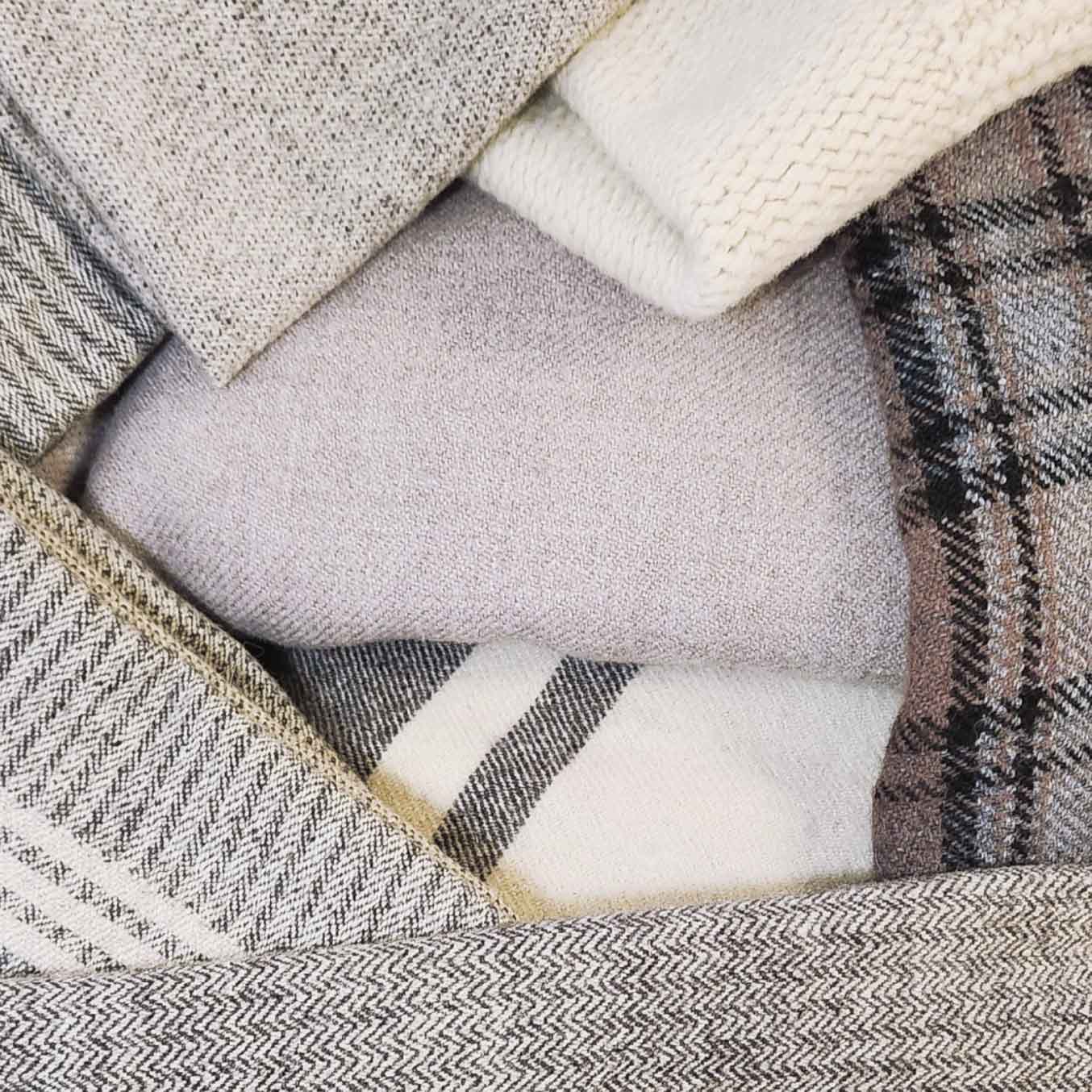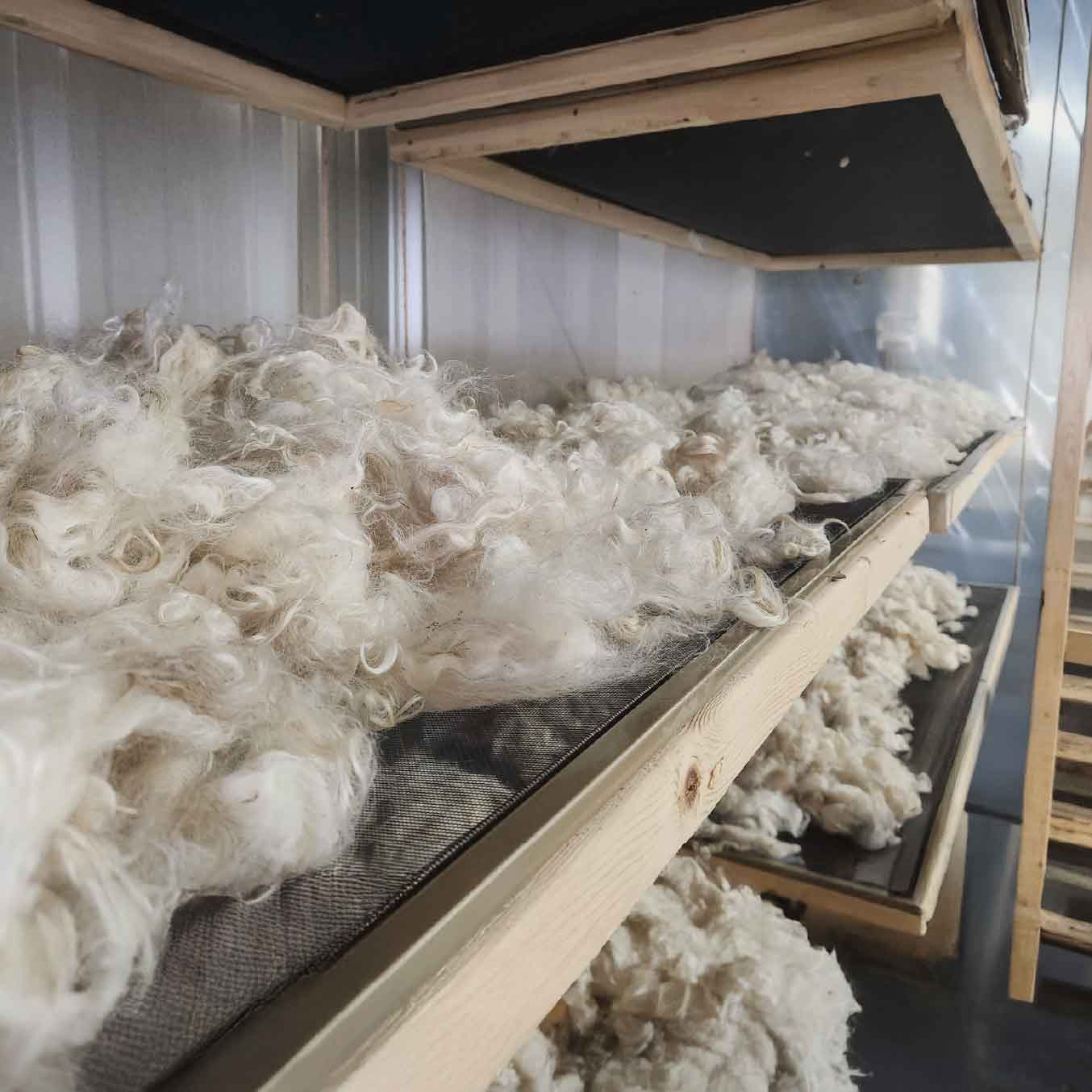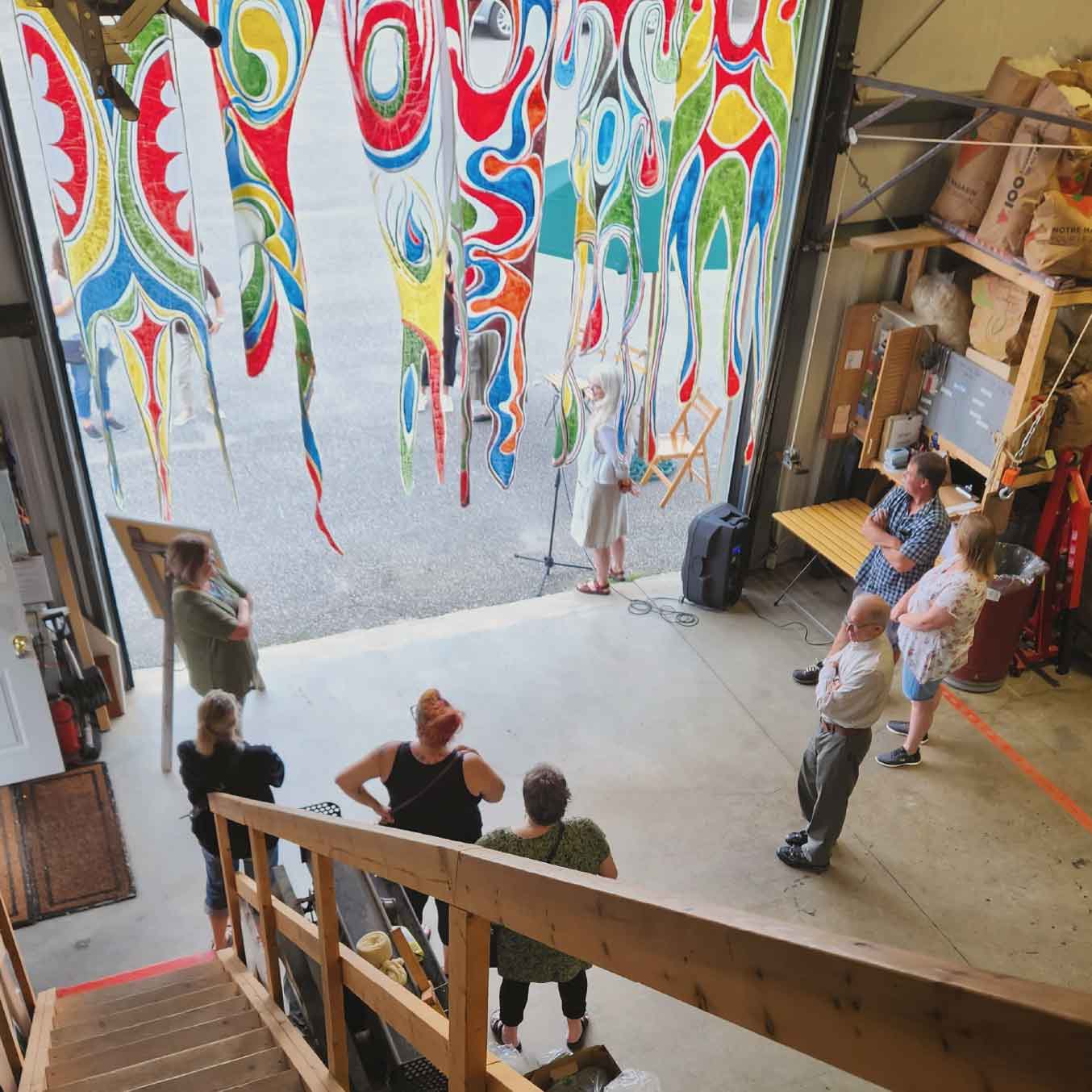Fabric – Shop Soon
At Wave Fibre Mill, we weave our fabrics using a variety of yarns spun here at the mill.
All of our wool is 100% Canadian, sourced from Ontario, supporting local farms and ensuring full traceability. As well as weaving unique fabric for our own line of fashion, we collaborate with designers to create custom fabric, tailored specifically to their specifications.
A selection of fabric is now available in limited quantities, sold by the yard.
Every breed of sheep offers unique fibre characteristics. Depending on the intended use of the fabric, we carefully select a breed, (or a blend of breeds), along with specific colours to achieve the desired texture, structure, and appearance.
For browns, grays, blacks and whites we use the natural colours of the animals. Any other colour is obtained from small batch natural dyes. Our fabric is not “finished” with toxic chemicals, allowing the natural beauty, nature and energy of the wool to shine through. The soap and PH balancer used in the spinning process are the only additions to the wool from its first wash to a finished garment.
The bulk of our fabric is woven on two AVL Industrial Dobby Looms, but we also use a wide range of hand looms for making throws, shawls, coverlets, and specialty fabrics. Every piece reflects thoughtful design, natural materials, and the precision of traditional weaving techniques.
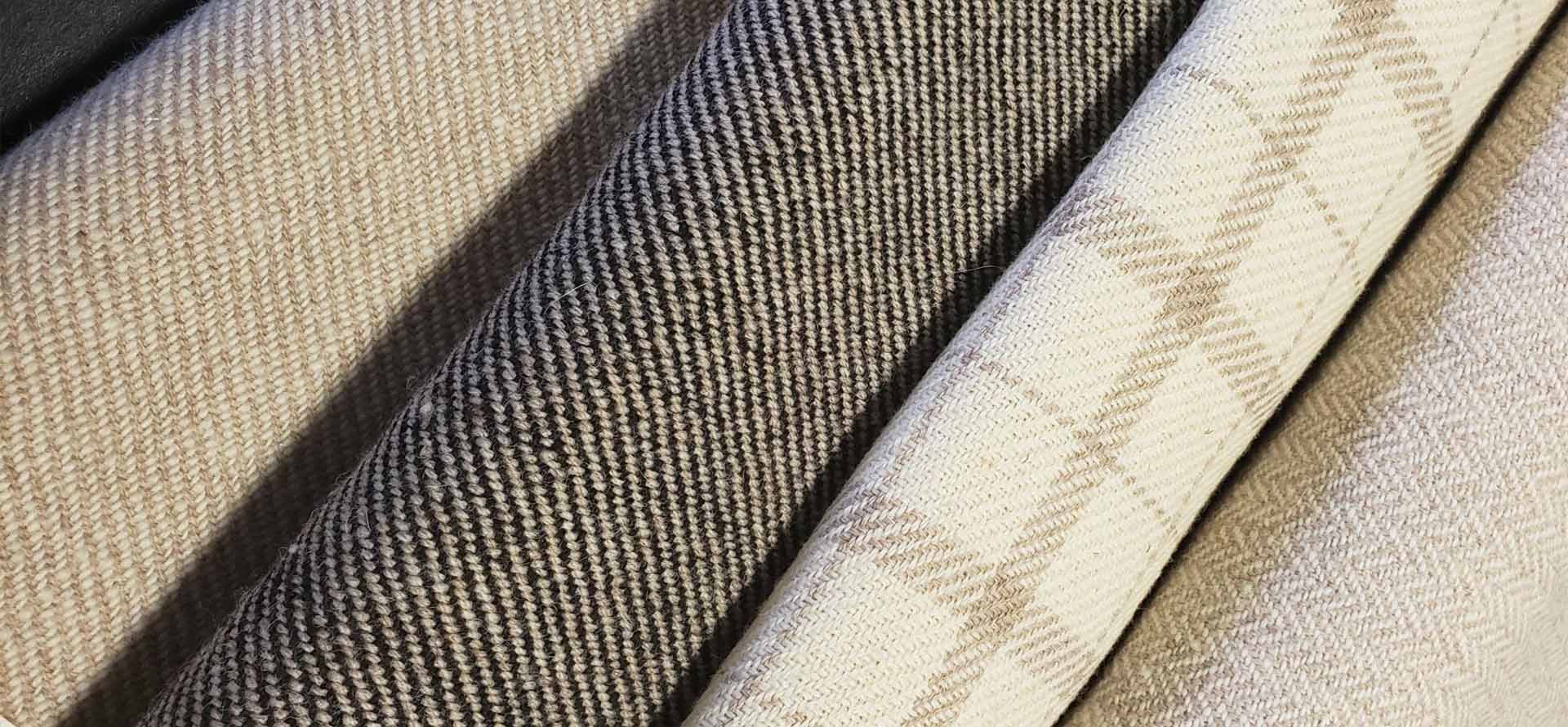
More Products

Blankets ![]()
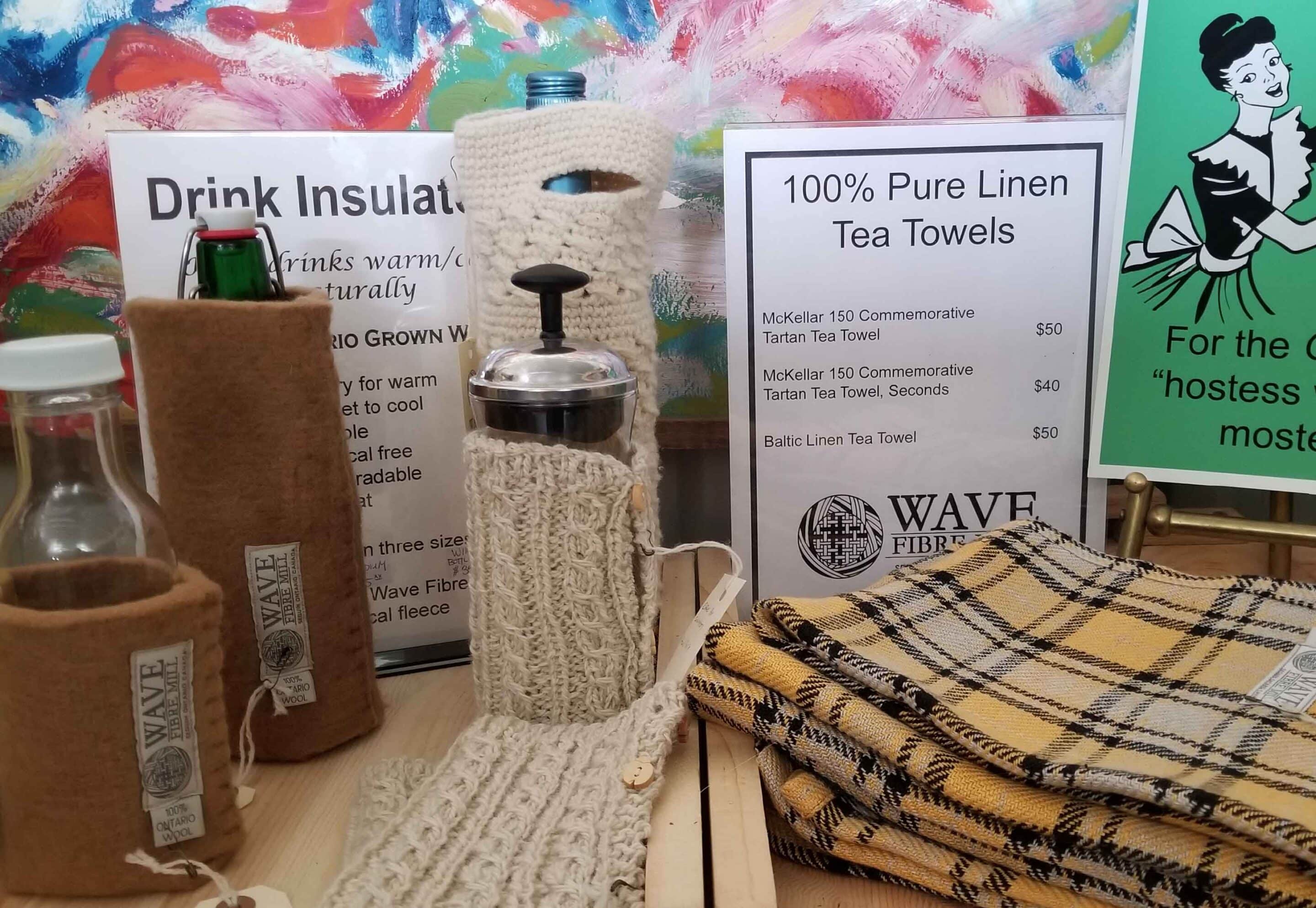
Household Wares ![]()

Toys ![]()
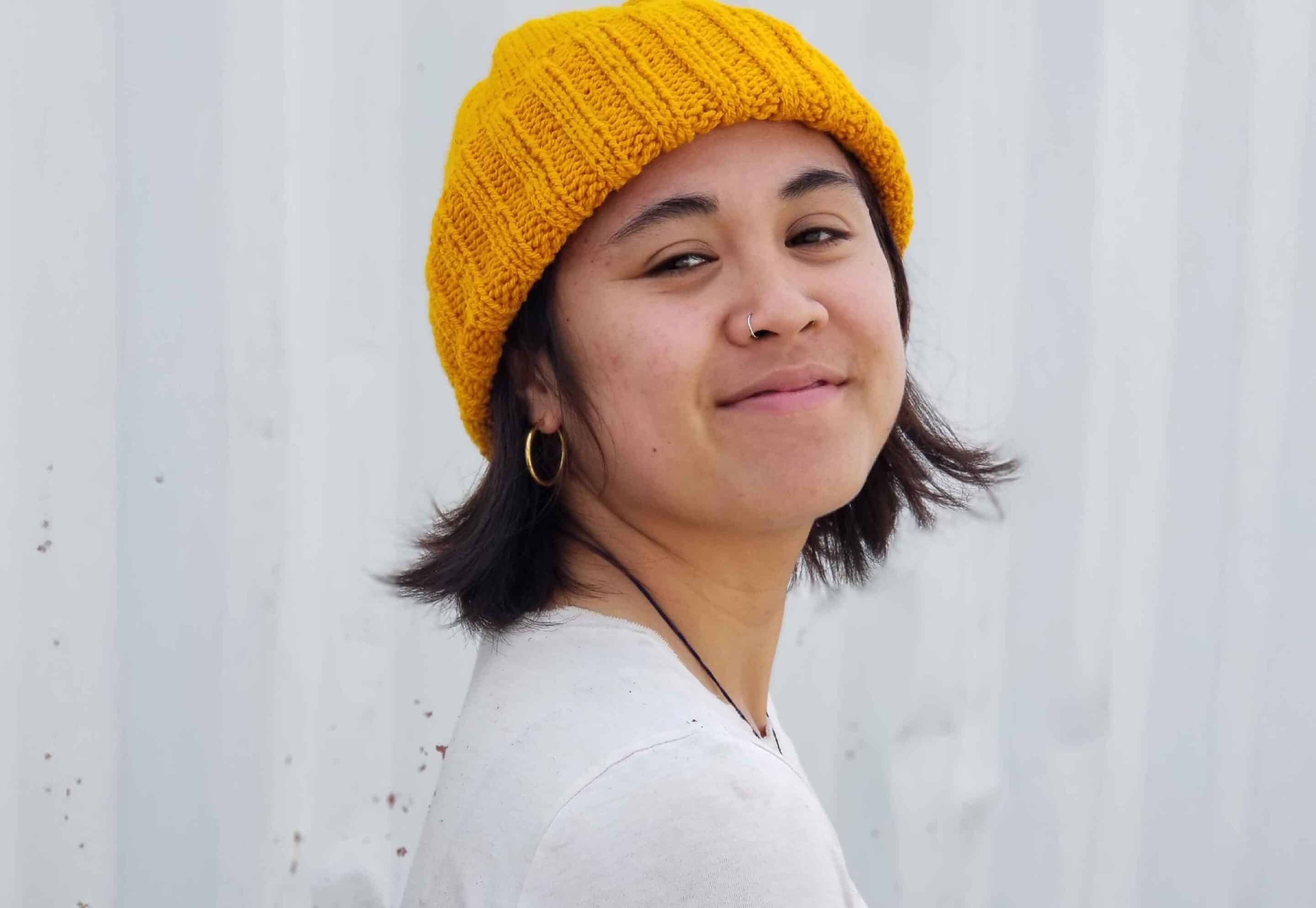
Accessories ![]()
